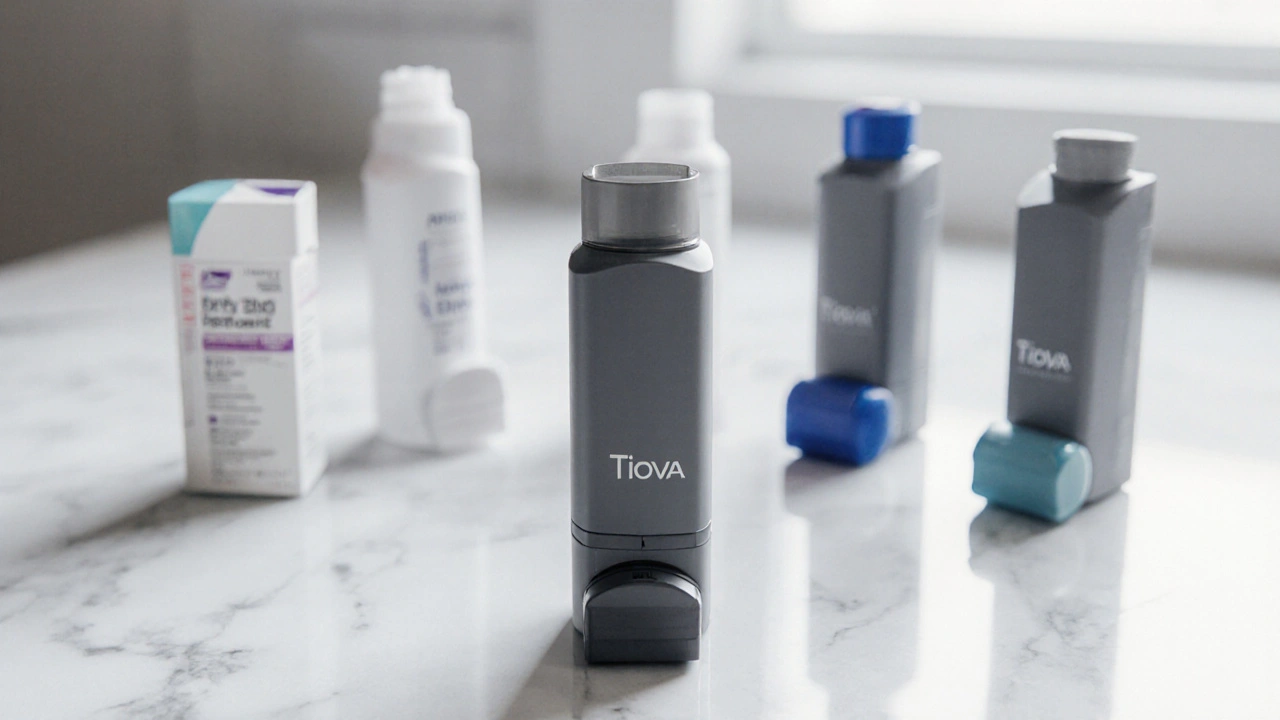COPD Inhaler Options – Picking the Best Device for Your Lungs
When managing COPD inhaler options, the variety of devices that deliver medicine straight to the lungs of people with chronic obstructive pulmonary disease. Also known as COPD inhalers, they are the frontline tool for easing breathlessness and slowing disease progression. The right choice often depends on the bronchodilator, a drug that relaxes airway muscles you need and the inhaler device, such as a metered‑dose inhaler (MDI) or dry‑powder inhaler (DPI) that matches your hand‑strength and routine.
First, know the medication families that sit behind most COPD inhalers. Bronchodilators like short‑acting beta‑agonists (SABAs) open airways quickly, while long‑acting beta‑agonists (LABAs) keep them open for up to 12 hours. Inhaled corticosteroids (ICS) shrink inflammation, and many patients use a combo of LABA + ICS for daily control. The choice of drug class sets the stage for device selection because each formulation works best with a particular inhaler type.
Device Types and How They Fit Your Life
MDIs spray a fine mist that you inhale, usually with a spacer to help coordination. They’re great if you have good hand‑eye timing and can manage the propellant pressure. DPIs rely on your own breath power to pull powder into the lungs, so they’re a solid pick for people who struggle with the hand‑mouth coordination of an MDI. Then there are soft‑mist inhalers, which create a slow‑moving mist that requires less force than a DPI but still avoids the propellant of an MDI. Each device comes with its own technique checklist, and getting it right can mean the difference between relief and wasted doses.
Technique isn’t just a side note—it’s a core piece of COPD management. Studies show patients who master inhaler use see up to 30 % better symptom control. That’s why many clinicians pair device choice with a brief training session and a follow‑up check using a spirometry test. Spirometry measures lung function and helps confirm that the inhaled medication is reaching the target area. If numbers don’t improve, it may be a sign the inhaler technique or device type needs tweaking.
Beyond the device and drug, other factors shape the decision. Cost and insurance coverage often drive which inhaler you can actually get. Some plans favor generic MDIs, while others may cover a brand‑name DPI with a lower co‑pay. Availability of rescue inhalers (often SABAs) versus maintenance inhalers (LABA/ICS combos) also matters in emergency planning. Finally, lifestyle cues—like whether you travel often, need a discreet device, or have arthritis—can push you toward a particular style.
All these pieces—medication class, device mechanics, technique, and personal circumstances—interlock to form a solid COPD inhaler plan. Below you’ll find a curated list of articles that break down each drug class, compare MDI vs DPI performance, offer step‑by‑step technique guides, and explain how to navigate insurance hurdles. Armed with that info, you’ll be able to choose an inhaler that fits your breathing needs and your daily routine.

Tiova Inhaler (Tiotropium) vs Top COPD Alternatives - 2025 Comparison Guide
A 2025 guide comparing Tiova inhaler (tiotropium) with top COPD alternatives, covering efficacy, cost, side effects, and practical usage tips.
More Detail